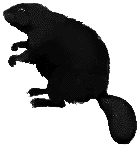The beaver comes of age!

(NC)-This year, the beaver celebrates its 21st year
as an official symbol of Canada. The beaver attained official
status as an emblem of Canada when an "act to provide for the
recognition of the beaver (castor canadensis) as a symbol of the
sovereignty of Canada" received royal assent on March 24,
1975.
After the early European explorers had realized that Canada was
not the spice-rich Orient, the main mercantile attraction was the
beaver population numbering in the millions. In the late 1600s and
early 1700s, the fashion of the day demanded fur hats, which
needed beaver pelts. As these hats became more popular, the demand
for the pelts grew.
The trade of beaver pelts proved so lucrative that the Hudson's
Bay Company honoured the buck-toothed little animal by putting it
on the shield of its coat of arms in 1678. (Sir William Alexander,
who was granted title to Nova Scotia in 1621, had been the first
to include the beaver in a coat of arms.)
The Hudson's Bay Company shield consists of four beavers separated
by a red St. George's Cross and reflects the importance of this
industrious rodent to the company. A coin was created to equal the
value of one beaver pelt.
Also, in 1678 Louis de Buade de Frontenac, then Governor of New
France, suggested the beaver as a suitable emblem for the colony,
and proposed it be included in the armorial bearings of the City
of Quebec. In 1690, in commemoration of France's successful
defence of Quebec, the "Kebeca Liberata Medal" was struck. A
seated woman, representing France, with a beaver at her feet,
representing Canada, appeared on the back.
The beaver was included in the armorial bearings of the City of
Montreal when it was incorporated as a city in 1833. Sir Sandford
Fleming assured the beaver a position as a national symbol when he
featured it on the first Canadian postage stamp-the 'Three Penny
Beaver' of 1851.